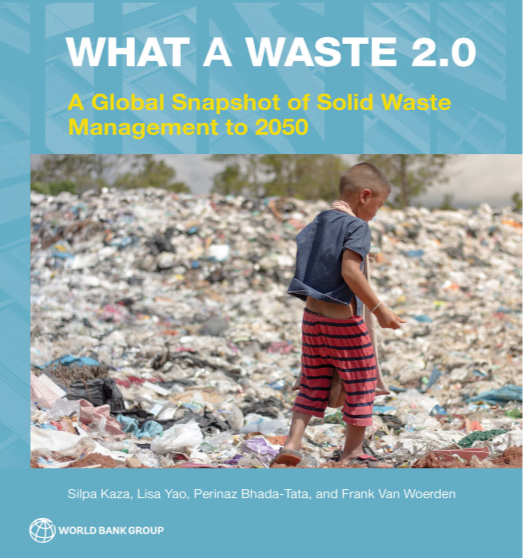
Citation
“Kaza, Silpa; Yao, Lisa C.; Bhada-Tata, Perinaz; Van Woerden, Frank. 2018. What a Waste 2.0 : A Global Snapshot of Solid Waste Management to 2050. Urban Development;” World Bank.
(Picture Courtesy of The National Academies of Sciences Engineering and Medicine)
Plastic waste can be found in almost every marine habitat, from the ocean surface to deep sea sediments to the ocean’s vast mid-water region, as well as in the Great Lakes
An estimated 8 million metric tons (MMT) of plastic waste enters the world’s ocean each year—the equivalent of dumping a garbage truck of plastic waste into the ocean every minute. If current practices continue, the amount of plastic discharged into the ocean could reach up to 53 MMT per year by 2030, roughly half of the total weight of fish caught from the ocean annually.
Society is grappling with the massive scale of the challenge of plastic waste with responses ranging from beach clean-ups and local bans to producer responsibility schemes and calls for country-level commitments and a global treaty. The U.S. bipartisan Save Our Seas 2.0 Act, passed into law in December 2020, called for a report on the U.S. contribution to global ocean plastic waste and its role in addressing plastic waste.
COVID-19 Impacts on Plastic Use
While the COVID-19 pandemic has highlighted the importance of and the heavy reliance on single-use plastics in the medical field, the pandemic has significantly increased plastic usage—single-use plastics in particular—and associated waste across many aspects of daily life. This is in large part due to the unprecedented demand for personal protective equipment (PPE) for both healthcare workers and the average citizen, safety screens, and single-use plastics, such as shipping plastics, plastic bags, and restaurant takeout containers (De Blasio and Fallon 2021). PPE is largely made from plastics. Surgical and N95 masks are commonly made of PP or PS (Henneberry 2020, Patrício Silva et al. 2021), although polycarbonate, polyethylene, polyester, polyurethane, and polyacrylonitrile are also used (Chellamani, Veerasubramanian, and Balaji 2013). Polycarbonate is normally used for the production of visors (Roberge 2016), goggles, and glasses (Edwards 2020). Disposable medical gowns are made up of different synthetic fibers—including PP, polyester, and polyethylene—while reusable gowns are made from 100% cotton, 100% polyester, or a polyester/cotton blend (Kilinc 2015). As such, plastics have become an essential tool to protect against transmission of the COVID-19 virus (De Blasio and Fallon 2021, Dharmaraj et al. 2021).
FIGURE 1. SOURCE: American Chemistry Council
North American supply and production of plastic resin types from 2001 to 2020 by weight.
Polystyrene and expandable polystyrene values are based upon total domestic supply, which includes productions and imports. All other resin values are based upon domestic production. Domestic indicates United States and Canada or United States, Canada, and Mexico, depending on the resin type and year. Read the Report HERE



